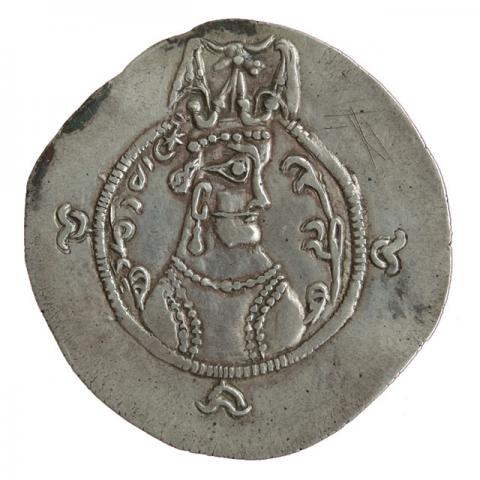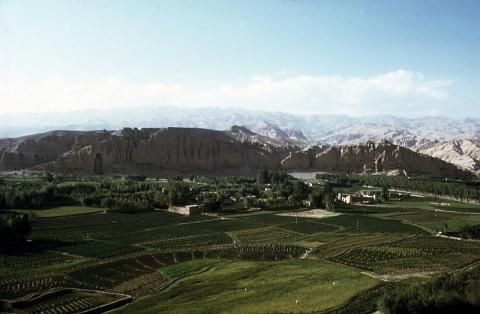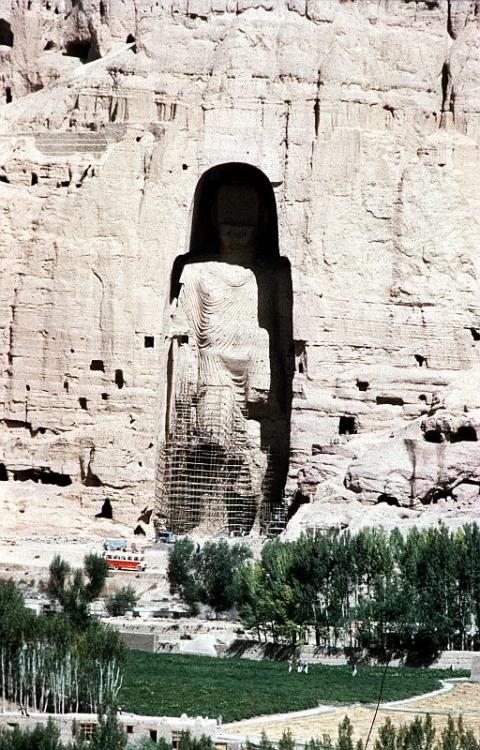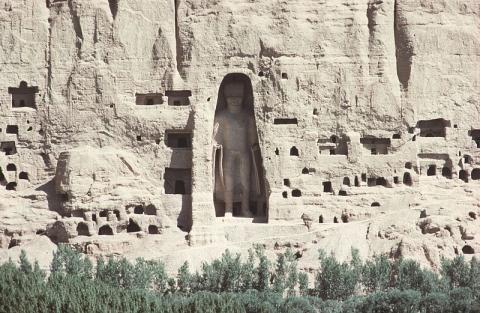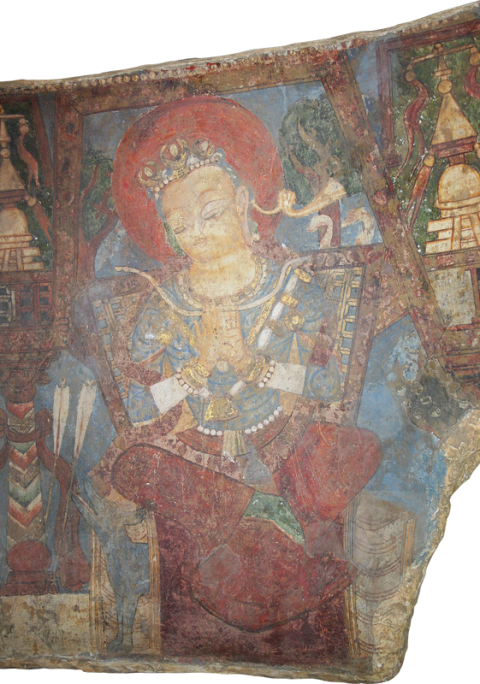At an old age in 738 CE "Khorasan Tegin Shah" gave up the throne and bid the Chinese emperor to invest his son Fulin Jipo (Phrom Kesar) as his successor (showcase 15).
The coins of this period show different directions of development which are on the one hand rooted in the old typology of Nezak coins (showcase 11) and on the other hand increasingly re-incorporate elements of Sasanian imperial coinage and tend to use of Middle Persian (Pehlevi) for their inscriptions. In addition, influences from the coinage of the Arab governors can be found.
Despite the over 50-year regency of "Khorasan Tegin Shah" only a few coin types can be attributed to him with certainty (Nos. 4–6); also one cannot discredit the fact that other subordinate rulers may have struck coins during the continuous defensive fight against the Arabs. The mints also cannot be localised with certainty, and often it is not possible to confirm whether a coin type was struck north or south of the Hindu Kush.
Two dated issues, one in 702/3 (No. 4) and the other in 708/09 or 728 (No. 6), are of extraordinary importance for the chronology of this coinage. Their inscription attributes them without a doubt to "Khorasan Tegin Shah".
The old winged bull's head crown of the Nezak is kept at first (No. 1), but the bull's head is subsequently replaced by a lion's head and the wings are left off (No. 6). An issue that combines a lion's head at the top of the crown and a bull's head on the side is particularly remarkable (No. 2). Among the innovations of the visual program is the three-quarter image of the ruler (Nos. 3, 6), which had not been in use since the Kidarites (showcase 4). The coin reverse continues to be dominated by the Sasanian fire altar, but with the new addition of the image of a deity in a flame nimbus, which has been interpreted as the Iranian fire god (Adur) or a personification of divine royal glory (khwarrah) (No. 6). This coin type is also found in Zabulistan (showcase 15) and was first used by the Sasanian king Khusro II (590–628 CE) for a series of special issues (showcase 2, No. 12).
The attribution of single drachms issues (Nos. 7–9) that might be connected to the rebellion of Nezak Tarkhan in Bactria is still unclear. Nezak Tarkhan is named in Arab sources as a Hephthalite prince, who accompanied the Arab commander Qutayba bin Muslim on a campaign to Bukhara in 709 CE then incited the princes of Bactria (Tokharistan) to rebel against the Arabs. In order to secure their retreat, the Kabul Shah was asked for help, and part of Nezak's wealth was transferred to Kabul. The rebellion failed, and in 710 CE Nezak was caught and executed by Qutabya as he fled to Kabul.
On the obverse, these coins show the image of the king with the winged bull's head crown of the Nezak. The reverse, with a fire altar, connects directly to Sasanian models. The legends are consistently in Pehlevi although most are no longer legible; one issue clearly mentions the title "Yabgu of the Bactrians" (No. 8). The tamga inscribed in a crescent moon is worth noting; although encountered as a rim decoration (Nos. 8, 9), it is otherwise found only on coinage struck south of the Hindu Kush (showcase 13).



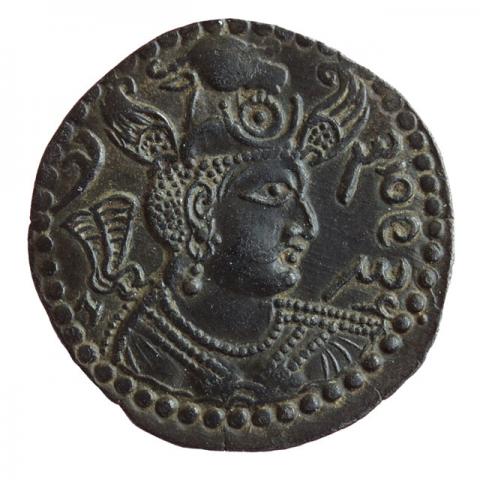
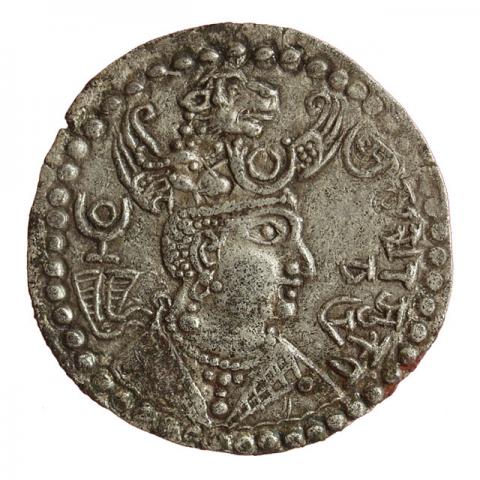
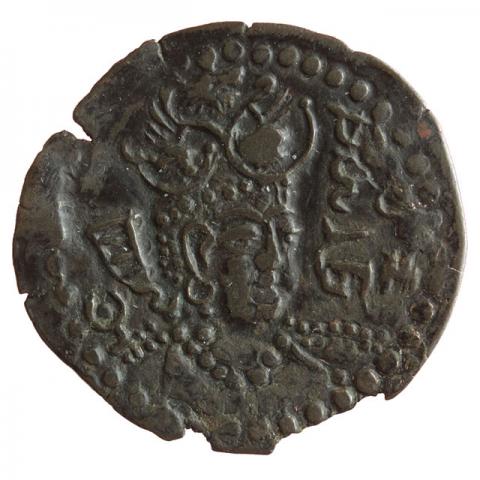


![Bust with lion's head-crescent moon crown in three-quarter view; Bactrian inscription "His Excellence, the King", Brahmi legend "His Excellence, the Iltäbär of Khalaj, Worshipper of the highest God, His Excellence, the King, the divine Tegin […]" Bust with lion's head-crescent moon crown in three-quarter view; Bactrian inscription "His Excellence, the King", Brahmi legend "His Excellence, the Iltäbär of Khalaj, Worshipper of the highest God, His Excellence, the King, the divine Tegin […]"](../sites/default/files/styles/large/public/images/coins/06a_208_JPR_0201_01.jpg%3Fitok=3F7HB2YU)
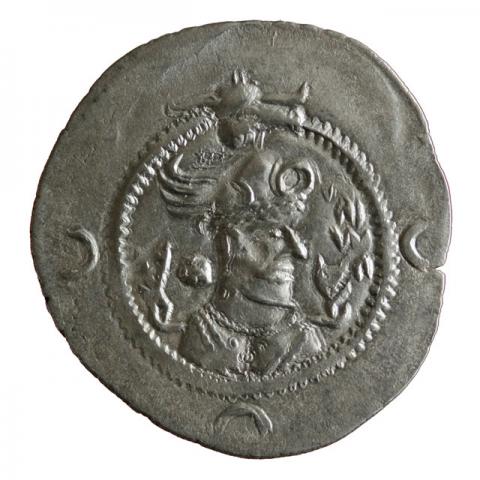
![Bust with winged bull's head-crescent moon crown, on the edge crescent moons with tamga; Pehlevi inscription "Yabgu of the Bacrians" – "[?] King" Bust with winged bull's head-crescent moon crown, on the edge crescent moons with tamga; Pehlevi inscription "Yabgu of the Bacrians" – "[?] King"](../sites/default/files/styles/large/public/images/coins/08a_265_Williams_243_01.jpg%3Fitok=-F4H3N0a)
